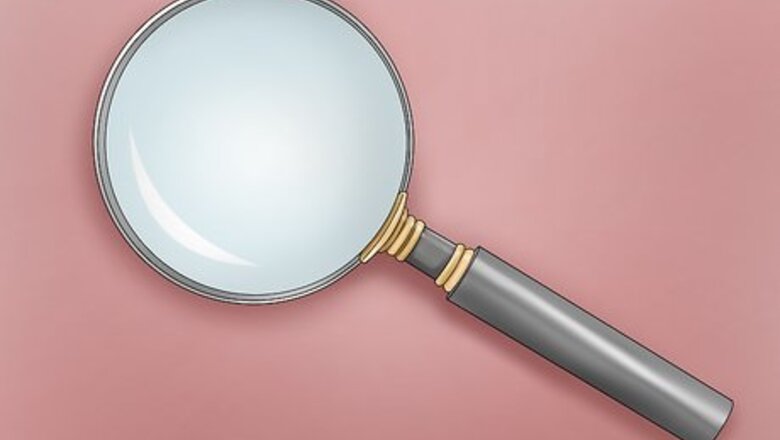
views
Estimating a Coin's Grade
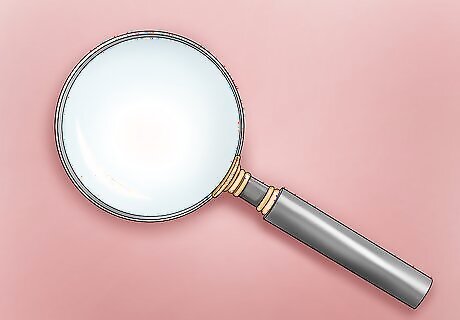
Get a good magnifying glass. Find one with sufficient strength, preferably at least 3x to 7x magnification. This will allow you to see the coin up close and to notice all of the little details that are important in discerning its grade.
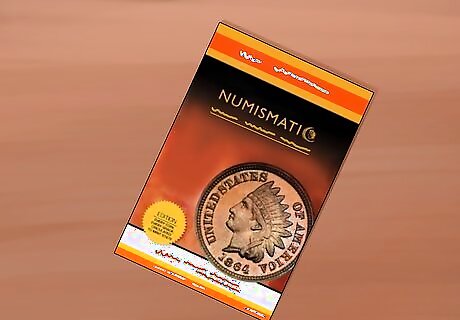
Obtain a book that provides coin grades and pictures. Some books provide information about which parts of coins wear first so that you know where to look for signs of wear or damage that may affect the coin's value. A recommended book is “Official ANA Grading Standards for United States Coins” by Kenneth Bressett because it shares the official standards of the American Numismatic Association and provides the foundation for other coin grading books.
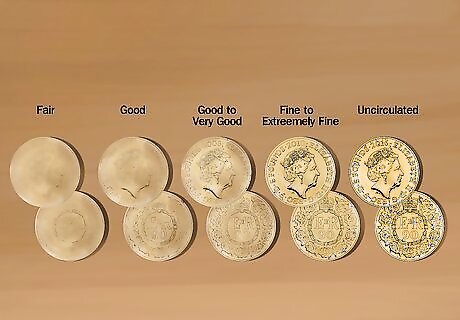
Learn the grades of coins. This is a skill that takes a great deal of practice and experience to master. But you can start right away to begin making progress and you will soon be able to roughly estimate a coin's grade. Coins in poor (P), fair (F), about good (AG), or good (G) condition generally aren't fine enough for collectors. These coins have a somewhat legible date and mint mark, but a good deal of the design is indistinguishable. However, they can be used to hold a place in a collection until a finer specimen is found. Coins graded very good (VG) show a worn design but are generally attractive and free of gouges or other mutilations. A fine (F) coin is highly legible, and the design is clear but a bit worn. These coins are attractive and desirable to collectors. A very fine (VF) coin has only light wear with a very clear mint mark, date, and design. An extremely fine (XF) coin has wear only on the high points of the design. About uncirculated (AU), uncirculated (U), choice uncirculated (CU) or gem uncirculated (GU) coins are beautiful coins that range from very little wear to completely without wear.
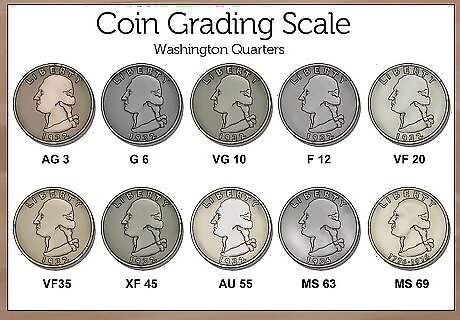
Learn the ANA scale. The American Numismatic Association developed a 70 point scale in the late 1970s to help create more specific, universal standards for coins. This in-depth scale helps take out some of the guesswork in determining coin grade. Grades 1-15 are for coins with significant wear and are not very valuable. Grades 20-45 include coins from Very Fine (VF) to Extremely Fine (XF) and only have light wear. Grades 50-58 are considered About Uncirculated (AU) with very little wear and a good deal of “mint luster.” Grades 60-70 are in Mint State (MS) and do not have any signs of wear. MS-70 means the coin is perfect, and this is nearly impossible to find in older coins.
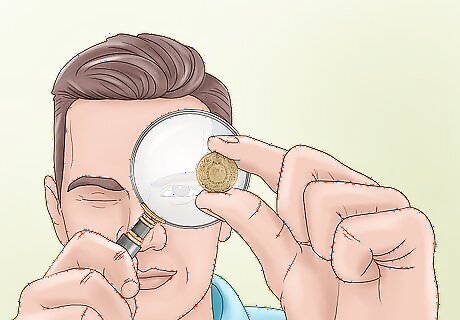
Practice with a sample coin. Find a sample coin at a dealership or coin show that is already graded. Try to find one that is a popular grade, such as MS-63 and study the coin with a magnifying glass. This will help you to get comfortable with a particular grade and be able to recognize it.
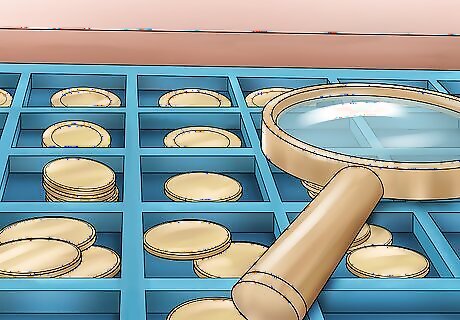
Use large quantities of coins. The more you practice, the easier it will become. It takes time looking at many, many coins to develop a frame of reference and to be able to distinguish the intricate variations between coins. You don't have to buy them all, but anytime you are at a coin dealership or show, spend time looking and asking questions about their grades. Fellow coin aficionados will likely be more than willing to help.
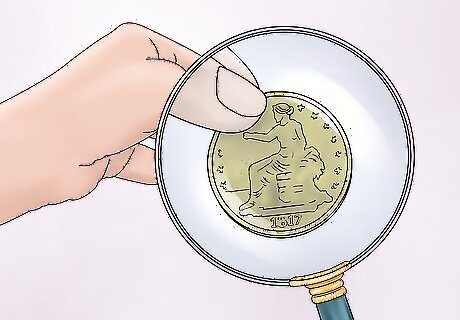
DO NOT hold the coin between your fingers, but rather hold them by their rims in good lighting. Carefully turn it around while holding it at an angle for optimal light reflection. Look for any damage or signs of wear on the coin. Hold it under your magnifying glass and find any scratches. Take your time to thoroughly examine the coin.
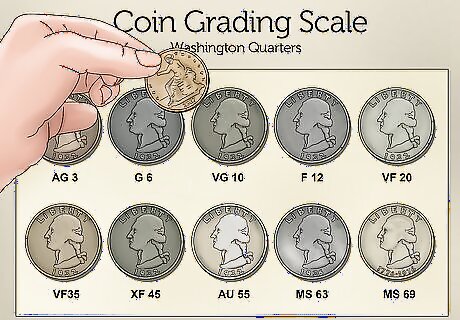
Compare your coins to photographs of coins at the different grading levels. You can find pictures of coins of each grade online or in a book of coin values. Alternatively, you can ask for photographs from a dealer who is willing to teach you to grade coins.
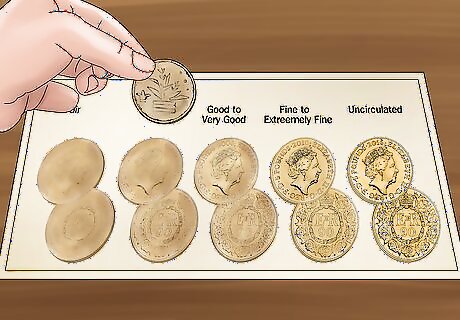
Decide which grade most accurately represents your coin. Based on the information you have, give your coin an estimated grade. It doesn't have to be exact, just in the ballpark. This is important because if you determine that your coin is less than Very Good (VG), your coin is likely not worth very much and having it professionally graded will likely cost more than your coin is worth. On the other hand, if your coin is in good condition, it might be worth a lot. You will especially want to get a professional grade on coins that are in Mint State (MS).
Getting a Professional Grade
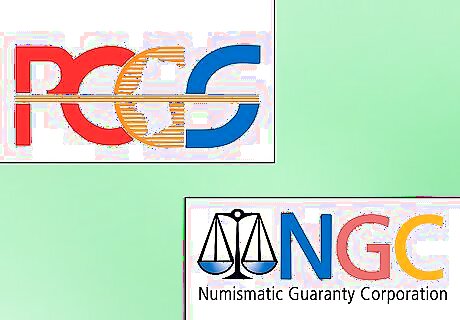
Use a service like the PCGS or NGC. The Professional Coin Grading Service (PCGS) and Numismatic Guaranty Corporation (NGC) are third-party certification and grading services. Both of these services consistently grade, authenticate, certify, and seal (in a protective display) coins for a small fee. They grade according to industry standards and are recognized as top tier grading services. The PCGS requires you to be a member for their services. This costs between $69 and $249 depending on your membership level. Gold and platinum level members receive a few free grading vouchers with their membership. Once you are a member, you can submit coins by using their online submission center and mailing them in or by attending one of their shows and submitting coins in person. The NGC also requires membership for their services. Their membership levels range from free, which provides access to their registry but does not allow you to submit coins to them, to elite, which costs $299 and includes a discount on their services and a $150 credit. If you do not wish to become a member, you can have your coins sent into these services by an authorized dealer instead.

Find a reputable dealer. This can be easier said than done. If you know someone else who is a collector, ask for a referral. This will help you to find someone who maintains the industry standard of ethics. Look for a dealer who is affiliated with the ANA. This will help you to find someone who is using the current standards of grading. You can do a quick search on their website to find dealers in your area. Look for a dealer who is affiliated with the PCGS or NGC. You can do a quick search on their website to find dealers in your area. This will help you to find someone who is able to send coins into these services for them to be graded.
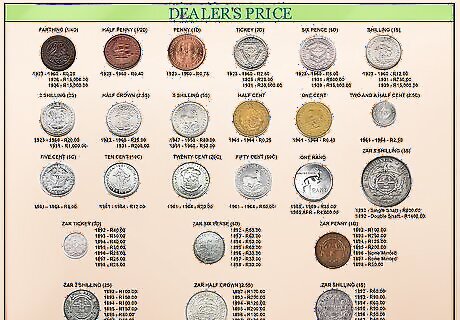
Find out the dealer or company's prices. Getting a coin graded costs money. This is why you want to estimate its grade before getting a professional grade. If your coin isn't worth very much, you probably don't want to spend more on getting its grade than the coin is actually worth. But if your coin is valuable, then it is an important investment. The NGC and PCGS charge anywhere from $12 to $250+ per coin, depending on the coin's value.
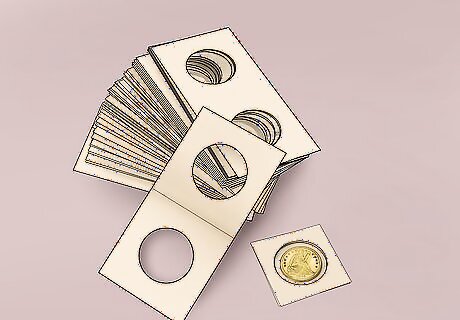
Mail in the coin. If using a third-party service, mail the coin to be graded. Make sure you know a lot about the company before sending anything valuable to them. Protect your coin when mailing it. Place each coin individually in a 2.5” by 2.5” mylar flip. This will safely store your coin for shipping. Make sure to label each mylar flip with a sticker so that the service knows which coin is which. Pack securely and use registered and insured mail to send them. Keep the tracking information to be sure your shipment arrives safely.
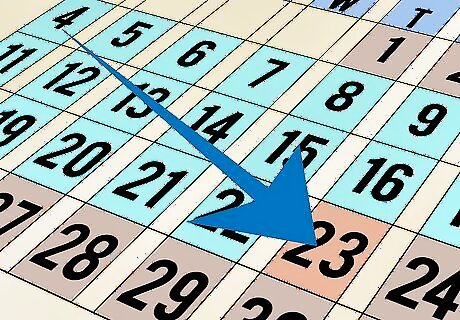
Wait for it to be graded. Depending on the service, the turnaround time can take up to a month. There are also often express options available that can grade your coin in about a week. Some services allow you to check the status of your coin online so that you can stay up-to-date on your coin's progress.

Make sure you are pleased with the services. In the case that you believe your coin might be over-graded or non-authentic, most reputable grading services allow for resubmission. They will take another look at the coin and in the case that it has been misattributed, they will pay the market value of the coin at its originally assigned grade and refund the fee and postage. However, if they determine that the coin's original grade was appropriate, you will have to pay for the fee of resubmission and will not receive any refunds.

Submit a coin at a trade show. Package the coin as you would to mail it, but instead of shipping it, simply turn it in at a coin show to the service you wish to use. They will take it with them and then mail it back to you once it is graded. Be prepared to pay for return shipping and for the grading services when you hand it into them. They will likely have a form for you to fill out. Make sure to follow all of their instructions. To find a trade show, most coin grading services have a listing of these on their website. Simply take a look and see which one you would like to attend. Make sure to find one that allows on-site grading.
Buying Graded Coins
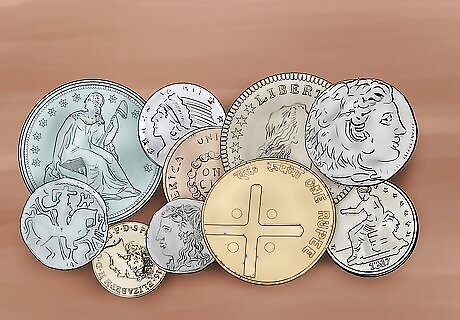
Obtain an appraisal from a dealer before purchasing a large coin collection. Be prepared to pay for the service, but understand that the initial investment in grading the collection could actually save you hundreds of dollars and prevent you from overpaying for a collection. Obtain appraisals from dealers who are members of professional associations. The American Numismatic Association Certification Service (A.N.A.C.S.), the Numismatic Certification Institute (NCI), the International Numismatic Society (INS), and Accugrade are all reputable organizations that certify qualified coin appraisers.
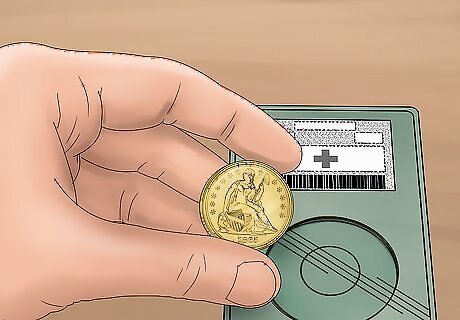
Purchase coins graded by third-party grading services. These coins are graded and then encapsulated in plastic. Buyers can have a great deal of confidence in the quality of their purchase when they buy coins graded by a third party.
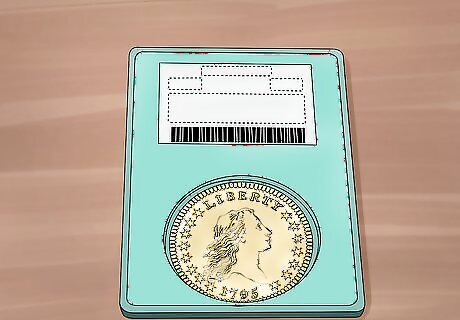
Trust your own judgment. Never buy a coin if you doubt the grading or if you are not completely satisfied with your purchase. Avoid purchasing coins online unless you are absolutely confident in your grading abilities. Make sure that the dealer has a reasonable money-back option if you are not completely satisfied with your purchase.

















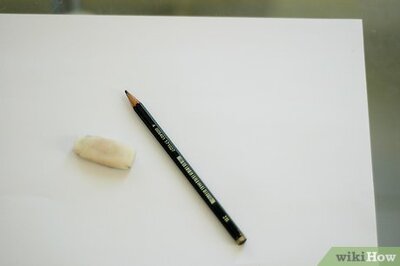
Comments
0 comment